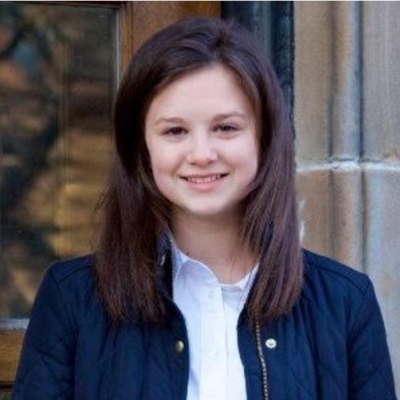The high cost of college attendance can be overwhelming for students and families. Recognizing this, Ohio policy makers have continually sought opportunities to provide alternate routes to careers and to drive down the cost of a university education. Recently, Ohio leaders have put a significant emphasis on career and technical education (CTE)—and research suggests that such a move can benefit high school students opting into a CTE pathway of study. In addition, the recent implementation of College Credit Plus (CCP) has widened student access to college credit opportunities and made it easier than ever for students to knock out general education requirements before stepping foot on campus.
But perhaps the state’s most creative program is GIVE Back, GO Forward, a pilot launched in partnership between the Ohio Department of Higher Education and the Ohio Department of Aging. The program links public service to college credit by offering citizens aged sixty and above the opportunity to earn college credit hours—or “gift” the equivalent amount of tuition associated with those credits—for volunteer work. As a pilot, the program is limited to Trumbull and Mahoning counties in Northeast Ohio. GIVE Back, GO Forward has the potential to be a huge win-win: It provides a platform for seniors to connect to their communities while also allowing them to provide financial assistance to the younger generation. After logging one hundred hours of volunteering with any of the three designated non-profits—Inspiring Minds, United Way, and Project MORE—participants receive a three-credit-hour tuition waiver which can be used at Youngstown State University or Eastern Gateway Community College. They can also donate their tuition credit to a student attending one of these institutions. Because college credit is awarded via tuition waivers, participating higher education institutions—not taxpayers— are responsible for the cost of the program.
The first tuition waiver was earned shortly after the program’s start in August 2015. Though feedback from the first year is still rolling in, there are already rumblings of statewide implementation: Ohio Department of Higher Education Chancellor John Carey remarked, “We are going to take what we’ve learned here and replicate it across the state.” Should the program grow, or even continue in its current form, there are a few quirks to consider. First is the limitation of tuition waivers: The pilot program only provides one hundred three-credit-hour waivers in total (fifty for YSU and fifty for EGCC), to be redeemed on a first-come, first-served basis. GIVE Back, GO Forward also greatly restricts the redemption of its credit vouchers—a student cannot utilize more than two tuition waivers per academic year, and all waivers must be redeemed within five years of the volunteer earning them.
These limitations are likely due to the launch of GIVE Back, GO Forward as a small, pilot initiative meant to measure the success and impact of the program before deciding whether to increase its scale. Another probable explanation is the responsibility of participating universities to find room in their own budgets to cover the cost.
GIVE Back, GO Forward gives seniors the choice to either use the credits themselves or gift them. However, Ohio law already offers college courses for free to residents aged sixty and older, so it’s likely that the ability to “gift” credits will be the program’s defining feature. GIVE Back, GO Forward has the potential to make a dent in the cost of college attendance: Three credit hours at Eastern Gateway Community College and Youngstown State University cost $335 and $810 dollars respectively.
Should participating universities agree to scale up this program, there are other concerns. For instance, are the students who most need college financial assistance also the least likely to have relationships with volunteering senior citizens? If so, then the program could disproportionately (and somewhat perversely) benefit college students with the least amount of financial need. Offering seniors the opportunity to gift the credit to a young person they know and care for makes sense, but implementing an anonymous match option between needy students and willing senior volunteers could enhance the program’s equity.
As with any well-intentioned policy, the devil is in the details. A stricter focus on gifting credit to the neediest college students could improve this policy as an affordability initiative, but GIVE Back, GO Forward’s current design creates a unique opportunity to meet the needs of both younger and aging populations. It aims to keep Ohio’s growing senior population active and engaged in their local communities and helps young people access higher education. Here’s hoping policy makers can learn from this pilot and iron out the details so that the program can be scaled up to benefit seniors and young people throughout the Buckeye State.
